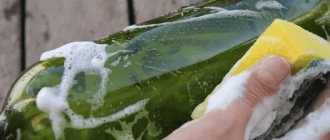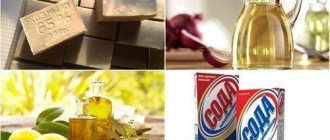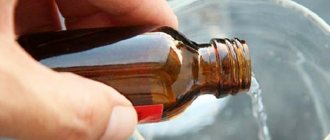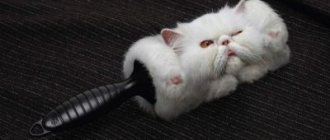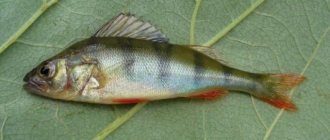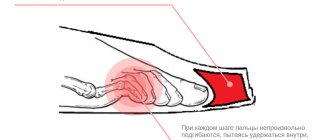Who hasn't encountered the problem of a splinter? This situation often arises in everyday life and sometimes causes many problems. Especially if the splinter is driven by small children who cannot tolerate even minor pain. We will tell you how to deal with this problem quickly and without consequences.
Author of the article / Site experts Shulepin Ivan Vladimirovich, traumatologist-orthopedist, highest qualification category
Total work experience over 25 years. In 1994 he graduated from the Moscow Institute of Medical and Social Rehabilitation, in 1997 he completed a residency in the specialty “Traumatology and Orthopedics” at the Central Research Institute of Traumatology and Orthopedics named after. N.N. Prifova.
Splinter danger
Nature has provided a mechanism for independently combating splinters. After all, sharp foreign bodies cut into our skin quite often - in nature, when working in the garden, or when handling sharp objects carelessly. Cells of the immune system, primarily tissue phagocytes, rush towards the foreign agent, and the process of “absorption” of the uninvited guests begins. Some of the cells die, forming the basis of pus. If the splinter is small and located in the superficial areas of the skin, it is pushed to the surface along with pus. But in the case of deep penetration into the tissue, the process of suppuration becomes widespread. If you do not pull out the splinter in this case, the affected area begins to tear, and the following symptoms appear:
- Pain, sometimes severe, throbbing.
- Redness and swelling of the sore spot.
- Increased body temperature.
- Spread of inflammation to neighboring areas.
This situation leads to the development of complications, including sepsis. Therefore, the general approach is to immediately remove any splinters when they are discovered.
This is usually available at home. Difficulties arise when a child has a splinter when he cannot accurately name the location of the injury. In such cases, you need to contact a pediatrician or traumatologist.
Don't leave a splinter unattended! It may be dangerous!
When you need to urgently seek medical help
In the vast majority of cases, it is easy to get rid of a splinter on your own, but in some situations you may still need to urgently contact a medical facility. You will have to refuse self-medication in the following situations:
- the foreign body is located in the orbital area;
- the splinter has entered so deeply that it cannot be removed within 12 hours;
- the tip of the splinter broke off and remained deep in the tissue;
- the splinter is a thin piece of glass;
- the splinter is part of a poisonous plant;
- the splinter is part of the animal;
- at the site of splinter penetration, redness, hardening and suppuration develop within 4–6 hours.
In addition, a visit to the doctor will be required if the splinter gets into the child’s skin and goes very deep.
Methods for removing a shallow splinter
Fortunately, the vast majority of splinters are superficial and can be easily removed with improvised means.
With a needle
To remove an embedded splinter correctly, you need to follow the following sequence of actions (if the splinter is located on the palm or finger, not deep under the skin):
- First of all, you need to wash your hands, tweezers and needle.
- Next, treat the damaged area and tweezers (needle) with alcohol. Instead of a sewing needle, it is better to use a sterile one from a disposable syringe.
- It is necessary to ensure good visibility: open the curtains, turn on a bright lamp, wear glasses or use a magnifying glass.
- If the splinter is covered by a layer of epidermis, it must be removed by carefully prying it with a needle so that the tip of the splinter appears above the surface.
- If the tip can be grabbed with tweezers, it is carefully pulled out. The main danger at this stage is to break off and leave part of the splinter in the tissues. If this is not noticed, which is often the case, suppuration will continue. To prevent such a situation, the splinter is removed slowly and at the same angle at which it entered the tissue.
- Once you are sure that the splinter is completely out, apply pressure to the tissue around the wound. This will release contaminated fluid (blood, lymph, pus).
- The wound should be treated with an antiseptic (hydrogen peroxide, alcohol, iodine, brilliant green). If the injury is extensive, you can apply a bandage or cover the area with a bactericidal adhesive plaster.
You should consult a doctor in the following situations: if it is impossible to open the tip of the splinter (located very deep), part of it remains in the tissue and after the procedure pain, swelling and redness of the tissue persists (there is a high probability of the inflammatory process continuing).
Soda
There are several ways to remove a splinter without a needle. They are especially important for young patients and their parents, since the very sight of a needle causes a child to go hysterical. One of them is baking soda. To do this, you need to prepare a paste-like mass by adding a little water to a quarter teaspoon of soda. The mixture is applied to the affected area and sealed with an adhesive plaster for 24 hours. After this, the tip of the splinter should appear above the skin and it can be removed with tweezers. It is allowed to re-apply soda for another 24 hours. If the splinter still cannot be grabbed and pulled out, you should consult a doctor or, in the absence of severe inflammation, try another method.
Can
The technology of placing medical cups is becoming a thing of the past today. But it is perfect for “raising” the tip of a splinter above the surface of the skin. To do this, a burning cotton wick is placed inside the jar for one second, then it is removed, and the jar is quickly applied to the affected area. A kind of vacuum forms under it, which causes the splinter to move outward. The main thing is not to overheat the edges of the jar and cause a burn. This way you can painlessly remove the splinter from the smooth surfaces of the body.
Wax or glue
Very good for superficial splinters in a child who won’t let anyone approach him with a needle. It is enough to generously lubricate the surface with PVA glue or wax. After hardening, they can be easily removed without pain. The splinter sticks and comes out of the skin.
Removing a splinter using folk remedies
Method No. 4. PVA glue
PVA glue is an unusual but effective way to deal with splinters without using needles.
The glue is applied to the child's damaged skin and then, after drying, carefully removed. The splinter is firmly glued to the PVA layer and can be easily removed. But it is worth keeping in mind that in this case the foreign body may break off, and the tip that was deep may remain in the skin.
Method No. 5. Table salt
This is a good way to remove a splinter that is no more than an hour old without pain.
After 15-20 minutes of steaming, you need to lightly press on the skin near the splinter, and the foreign body will come out on its own (if necessary, you can help with tweezers).
But it is important to steam the skin properly, and with restless guys it can be difficult to keep them in one place for a long time.
Method No. 6. Birch tar/Banana peel
Both tar and banana peels can “push out” a splinter if they are used in compresses.
Birch tar or a piece of banana peel is applied to the sore spot, covered with cling film and tied with a bandage. This bandage is kept on all night. The next morning, the splinter appears at the very top of the skin, and can be easily pulled out with tweezers.
Method No. 7. Aloe
Aloe juice has healing and disinfecting properties, and, most importantly, this plant is on the windowsill in almost every apartment.
A freshly cut aloe leaf should be cut lengthwise and then tied to the place with the splinter. This bandage should be worn without removing for 4-5 hours. After this, the splinter will be at the top and can be removed with tweezers.
Method No. 8. Lard and hydrogen peroxide
If you have unsalted lard and hydrogen peroxide on hand, you can try this method.
A piece of lard is applied to the damaged skin, secured with a bandage. After 2-3 hours, remove the bandage and generously water the damaged area with hydrogen peroxide. The splinter will end up on the surface along with the foam from the peroxide. It is not painful, but the child may feel a slight tingling sensation as the hydrogen peroxide takes effect.
Removing deep and invisible splinters
The greatest problems are caused by sharp objects that have penetrated deeply or, due to their properties, are not visible. These are thin shards of glass (for example, from a broken light bulb), a needle from a cactus, or a metal splinter made from tiny shavings. In such cases, it is almost impossible to see the exact location of the injury. We offer two proven ways to solve this problem.
Compress
“Ichthyol ointment” is suitable as a medicine. It has anti-inflammatory and antiseptic properties, so it not only helps the splinter come to the surface, but also prevents a situation where injured tissue festers and inflammation spreads to neighboring areas. The compress is applied at night or for a day (if necessary). The fatty ointment penetrates the epidermis, lubricates the foreign body and causes its tip to appear above the surface of the skin. After this, the splinter can be easily removed with tweezers. Other types of compresses:
- Potato gruel - grate fresh potatoes and leave for 8-10 hours.
- Aloe juice - moisten gauze with fresh juice from the leaves of the plant. It is an effective antibacterial and anti-inflammatory agent.
- Birch tar. The product has a strong odor. Polyethylene is placed on top of it and then bandaged overnight.
You can’t get too carried away with compresses.
If after the first time the splinter does not come out, you need to go to the emergency room. Otherwise, the thermal effect from the compress will provoke an inflammatory reaction.
Removing a glass shard
Glass usually gets to us in the most inconvenient and painful places: fingers and soles. We have already described the principles for extracting such fragments from the hand. The difficulty lies in the fact that glass easily breaks in fabrics, leaving fragments and completely invisible to the naked eye. Features of removing glass from a leg are as follows:
- Do not allow even the slightest pressure on the affected area. If a fragment is lodged in the heel, it is forbidden to step on that foot, as the glass will go deeper, crumble and can get into the blood vessels.
- Before removal, the injured area is first carefully washed with soap and then wiped dry, blotting with an absorbent towel. On a dry surface, a shiny shard will be more visible than on a wet surface.
- Before removal, you need to assess the depth of glass penetration into the tissue. If you are not sure that the splinter is superficial, it is better to consult a doctor, since there is a high probability that the glass will break when pulled out and some of it will remain in the tissues.
- It is better to remove the glass under a magnifying glass in good lighting.
- First, you need to move the fragment from its place with a needle, then grab it with tweezers and pull at the angle at which it entered the skin.
- If the splinter cannot be pulled out, the process cannot be forced due to the risk of breaking the fragile fragment and further injuring the tissue.
A more painless, but longer-lasting method is a compress with Ichthyol ointment. If the glass is stuck in your foot, this method is not suitable, because to do this you will have to stop walking for a day. But with a different localization, the compress will cause the splinter to come out on its own.
Traditional methods
On the Internet you can find many interesting ways to remove splinters, but not all of them are effective or safe. Let's look at the most common folk recipes.
- Iodine
It is recommended to lubricate a wound with a wooden splinter every 3 hours with iodine, which will gradually destroy the structure of the wood. This technique is not without its drawbacks:
- It will take too much time to completely destroy and remove the remnants of the splinter, and this increases the risk of an infectious process.
- No amount of iodine can cope with a large splinter.
- Constant exposure of an open wound to iodine can cause a chemical burn.
- Salt
Table salt effectively removes excess fluid from the wound and reduces swelling. Against this background, the splinter becomes better visible, and it is easier to pick it up with tools. To prepare a hypertonic solution, just add 3 tsp to a glass of boiling water. salt.
- Glue
PVA glue contains skin-safe substances, so it can be used instead of tape or plaster to remove small surface splinters. A thin layer of PVA is applied to the affected area, and after drying, the film is removed along with the adhered particles.
Important!
The use of silicate glue or Moment glue for this purpose is prohibited. You can only use PVA and special medical products - BF-6 or BF-2.
- Sunflower oil
The oil softens rough skin and improves the sliding of splinters, so its use is advisable. Vegetable oil is heated to 50-60 °C and applied to the wound with cotton wool for 15 minutes. Then the splinter is removed with forceps or a needle.
- Vodka or alcohol
Ethanol has tanning properties - it extracts moisture from the skin, the splinter becomes visible and is easier to remove. The alcohol is used as a compress and kept for about 30 minutes.
- Banana skin
Banana peel also contains tannins, but its use is more dangerous, since pathogenic bacteria can “hide” in the skin. It is better to choose a less risky and more effective method.
- Onion gruel
Official medicine categorically does not recommend resorting to pureed onions. It has a local irritant effect, enhances the inflammatory reaction and corrodes the wound.
- Raw potatoes
Raw potato gruel also softens the epidermis, but it acts slowly and is not effective enough. A regular hypertonic solution will help much better.
Removing a splinter from an eye
Each person removed a speck from his eye. If it is located superficially, rinsing with warm water is sufficient. To do this, you need to lean over the water, wet your eyes generously with the palms of both hands and blink. You can pull down the upper or lower eyelid and pick up the splinter with a damp cotton pad. After the procedure, rinse the eyes again and apply antiseptic eye drops (Albucid, Tobrex and others). You can only remove splinters from your eyelids yourself. If a foreign body is located in the eyeball, you should urgently consult a doctor. Rules for first aid for eye splinters:
- Do not rub the injured eye with your hand.
- Apply glycerin or spread with sterilized sunflower oil or Vaseline.
- Apply a soft bandage to the eye.
- If you are sure that metal shavings have gotten into your eye, you can try removing them with a magnet. If unsuccessful, also consult a doctor.
When performing independent manipulations in the eye, you need to do them only with clean hands and in the direction from the temples to the bridge of the nose.
Video: how to properly remove a splinter
- Author: Alexandra
General practitioner at a city clinic. Eight years ago I graduated from Tver State Medical University with honors. Rate this article:
- 5
- 4
- 3
- 2
- 1
(44 votes, average: 4 out of 5)
Share with your friends!
How to remove a splinter from under your nail without any problems
Using lemon for acne - simple but effective recipes
Removing a splinter from a child
The problem of splinters in young children is much greater than in adults. Solving it is complicated by the fact that children cannot show the exact location of the injury, do not tolerate pain well and cannot stand the sight of a needle, which parents traditionally take to remove a foreign body. Therefore, if you suspect that your baby has received a splinter, you need to remember the following recommendations:
- The first thing you need to do is calm the little patient down and distract him with toys. Otherwise, the child will not allow you to touch the sore spot and may drive the splinter even deeper.
- Methods without a needle are better for children. This is extraction with glue, adhesive tape, or “Ichthyol ointment.”
- The child can be offered a “water game” by adding baby soap to a bowl of warm water. The skin of the injured area will soften, and the tip of the splinter will appear above the surface.
The most important thing in helping a child is the peace of mind of the parents.
If you are not confident in your abilities or the splinter has entered deeply into the tissue, it is better to go to the emergency room, where your baby will quickly receive professional help.
Symptoms accompanying getting a splinter
The main signs of a splinter getting into the tissue:
- Stitching pain that intensifies when you touch the punctured area;
- The presence of a visible part of the splinter above the skin;
- Bleeding;
- Non-healing punctate wound;
- Swelling, redness of the skin in the area of foreign body penetration;
- A chronic abscess in the same place is an indirect sign of an old splinter.
Deep
It is quite difficult to remove the wood chips if they are deep under the skin. Before the procedure, hands are washed with soap and the wound is treated with an antiseptic. Using a needle and tweezers, which are pre-boiled, the foreign body is pulled out.
There is no need to remove with your fingers, press on the skin, or scrape with your nails. There is a possibility that the tip of the splinter will tear.
If the chips cannot be removed using the described objects or the tip has broken off, you need to:
- Prepare a deep bowl.
- Grind the toilet soap using a grater, pour into a bowl and add warm water.
- Immerse the damaged area of skin in the solution for 20 – 25 minutes.
- The procedure is carried out 4 – 5 times a day.
- The dermis will become soft, and it will be easy to remove the fragment.
A foreign body that has penetrated deep under the skin is removed with the help of pharmaceutical anti-inflammatory drugs.
Applicable:
- Ichthyol ointment;
- Liniment Vishnevsky;
- Bodyagi powder or gel (based on medicinal algae).
Medicines are applied to the damaged area of the skin, covered with gauze or a bandage, and secured with an adhesive plaster (not tightly). After 5 - 8 hours, the bandage is removed, the splinter comes out on its own with liquid (ichor, pus). The wound is treated with iodine or brilliant green.
If you cannot remove the chip on your own, you need to seek help from a surgeon.


